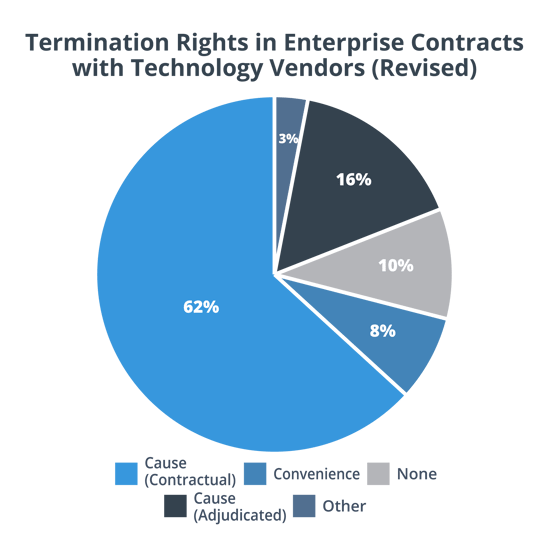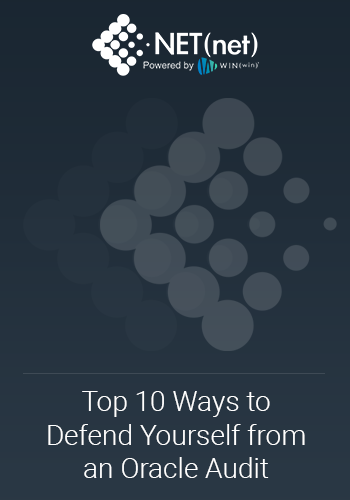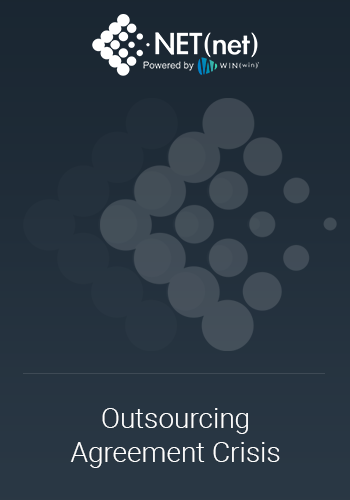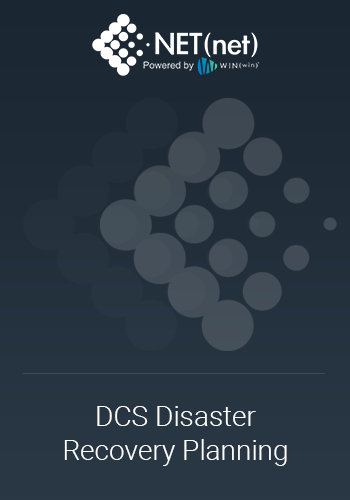At NET(net), we’re constantly asked: “Can I terminate my agreement with XYZ Supplier mid-term?” The short answer? It’s tough—but not impossible. As you’ll see in the attached chart, termination rights for enterprise customers with technology vendors fall into one of five categories, as outlined below:
- Termination for convenience is rare due to vendor resistance, as it undermines revenue stability. TermScout notes 82% of customer forms seek this right, but negotiated contracts often exclude it, especially in SaaS or long-term deals. However, large enterprises with strong leverage (e.g., Fortune 100 companies) may secure this right in some cases, particularly for non-critical services or shorter-term contracts.
- Termination for cause (General) is the most common right in enterprise contracts, triggered by material breaches (e.g., SLA failures, non-performance, insolvency) after a notice and cure period (typically 30–60 days). TermScout’s data suggests 91% of customer-drafted forms include termination for cause, and even vendor forms often concede this in negotiations.
- Termination for cause (Adjudicated): Requiring formal adjudication (e.g., court or arbitration rulings) before termination is rare, as enterprise buyers and vendors prefer quicker, contractually defined exits to avoid legal costs. Some contracts, especially in highly regulated industries (e.g., government, finance, healthcare), may require dispute resolution before termination, particularly for complex breaches.
- No Termination Rights: Completely excluding termination rights is uncommon in enterprise contracts, especially for larger organizations, as they negotiate for at least cause-based termination. TermScout’s data indicates 15% of vendor forms lack cancellation rights, but negotiated contracts often include some flexibility.

The interest on this topic peaked during the pandemic, prompting us to blog about this in relation to terminating IT Services Agreements (most buyers were mistakenly trying to invoke force majeure – which was no silver bullet), and publishing an Insider eBook. Current market conditions are re-energizing this discussion with client organizations who are impacted by new business concerns (largely related to the potential implications of tariffs) – forcing them to re-evaluate cost and value equations in their technology supply chains.
The real key to whether or not you can terminate an agreement mid-term lies in how well you anticipated and negotiated exit clauses before signing the agreement. If your existing vendor agreement with a technology supplier heavily favors them—as most do—you’re facing an uphill battle. These contracts are often designed to lock you in, protect vendor revenue, and shield the vendor from liability. But don’t despair. With the right strategy, you can reclaim control and minimize your risk. Here’s how, delivered with the sharp insight and actionable advice that sets NET(net) apart.
Why Vendor-Favored Agreements Are a Trap
Vendor-favored contracts create a minefield for client organizations seeking flexibility. Here’s what you’re up against:
- No Termination for Convenience: Most vendors do not offer termination for convenience language, requiring you to build a case for cause.
- Locked-In Termination Rights: Early exits are rare, often requiring a vendor breach and often trigger sky-high penalties like full remaining fees or liquidated damages.
- Financial Strangleholds: Expect clauses that demand accelerated payments, forfeiture of prepaid amounts, or hefty transition fees if you dare to leave early.
- Unfair Dispute Resolution: Vendors may force arbitration in their favor, limit your legal recourse, or require disputes to be settled in jurisdictions that tilt the playing field to their advantage.
- Data Control Nightmares: Extracting your data can be a nightmare, with vendors holding the keys and charging premium rates for access or migration.
These barriers aren’t accidents—they’re deliberate. But you’re not powerless. Here’s your battle plan, sequenced for maximum impact and minimal risk.
Your Strategic Playbook: 5 Steps to Freedom
- Dissect the Contract with Surgical Precision
Why It Matters: Knowledge is your first weapon. A deep dive into your contract reveals termination clauses, notice periods, and penalties—or the loopholes you can potentially exploit.
How to Win: Scour the agreement for mid-term termination language, notice requirements (30, 60, or 90 days), and post-termination obligations. Use this intel to craft your negotiation leverage, whether it’s offering prompt payment as an incentive (“carrot”) or hinting at legal action as a deterrent (“stick”).
Pro Tip: If the legalese feels like a foreign language, tap experts like NET(net), Inc (netnetweb.com) to decode the contract and pinpoint your strongest leverage points. Ambiguous language can often be interpreted multiple ways, and these points of contention can sometimes yield some flexibility. Even innocuous clauses like mid-term rate reviews can sometimes be exploited to create implied termination rights in negative CAGR industries. - Negotiate Like a Pro—or Walk Away
Why It Works: Vendors hate uncertainty. Even with a stacked contract, they’ll often bend if they see mutual benefit or fear of escalation.
How to Execute: Propose a mutual termination arrangement or contract amendment—think reduced scope, deferred payments, or a revised term. Highlight your changed circumstances (budget cuts, poor ROI, strategic shifts) and sweeten the deal with incentives like prompt payment or a glowing reference. If they dig in, escalate with a subtle reminder of public scrutiny or legal risks.
Caveat: Be ready to walk if they demand unreasonable concessions. Always document every interaction and secure written agreements to avoid future headaches. - Turn Up the Heat with Public Pressure
Why It’s Powerful: Vendors—especially public companies or reputation-driven brands—hate bad press. Early pressure creates urgency and strengthens your hand before formal talks.
How to Play It: Share your story (anonymously if needed) with industry peers, trade groups, or online forums. Frame it as a push for better standards, not just a vendetta. Use this buzz as leverage in negotiations, balancing the threat of exposure with the promise of a positive resolution if they cooperate.
Risk Alert: Watch for non-disparagement clauses and maintain professionalism to avoid backlash. - Enforce Termination for Cause (If They’ve Slipped Up)
Why It’s a Game-Changer: If the vendor’s performance stinks (missed deadlines, breached SLAs, shoddy support), you can terminate without (or with reduced) penalties. This shifts the power back to you.
How to Act: Collect hard evidence of their failures and check the contract for termination-for-cause provisions. Follow the process—usually written notice and a cure period—and use this as leverage to force compliance or renegotiation. Offer a quick, amicable fix as an olive branch if they respond fast.
Pro Tip: Let NET(net), Inc (netnetweb.com) analyze their performance with data-driven insights to bolster your case. - Go Legal—But Strategically
Why It’s a Last Resort: If all else fails, legal action or arbitration can pressure the vendor to settle. It’s costly and risky, but it can force movement when paired with other tactics.
How to Proceed: Hire a technology contract legal specialist (such as Bortstein Legal Group) to challenge unenforceable clauses (e.g., excessive penalties, unfair terms) or argue violations of trade laws, industry standards, or consumer protections). Use this threat as a final “stick” while holding out the “carrot” of avoiding a messy, public fight if they concede.
Warning: This path is slow, expensive, and favors vendors with deeper pockets. Use industry benchmarks from NET(net), Inc (netnetweb.com) to prove their terms are outliers and strengthen your position.
Critical Considerations Before You Pull the Trigger
- Crunch the Numbers: Weigh termination costs (penalties, disruptions, lost opportunities, potential legal fees, et al) against staying put. Vendor contracts often demand full payment even if you stop using their service.
- Secure Your Data: Ensure you can extract all data before cutting ties. Negotiate data return or destruction terms upfront to avoid being held hostage.
- Know Your Legal Landscape: Local laws might override unfair clauses. Check your jurisdiction for protections against punitive vendor terms.
Our Final Word: Take Control with Confidence
Start with a ruthless contract review (Step 1) to arm yourself with facts. If that doesn’t yield results, pivot to negotiation (Step 2) as your primary weapon, blending incentives (carrots) and pressure (sticks). If the vendor resists, amplify public pressure (Step 3) and enforce termination for cause (Step 4) if warranted. As a parallel strategy, prepare for legal action (Step 5) to maximize leverage. Throughout, maintain razor-sharp professionalism, document every move, and lean on NET(net), Inc (www.netnetweb.com), the leader in IT cost and value optimization—to guide you to victory.
At NET(net), we don’t just advise—we empower. Let us help you break free from vendor tyranny and reclaim your strategic edge.
External References
Harvard Business Review: "How to Negotiate with Powerful Suppliers"
Supports the blog’s negotiation strategies and highlights the importance of leverage in vendor relationships.
https://hbr.org/2015/07/how-to-negotiate-with-powerful-suppliers
This article discusses the reasons for terminating a managed service provider contract mid-term and the financial and legal implications to consider. It also advises on finding a new provider before ending an existing one.
https://www.forbes.com/sites/centurylink/2015/04/22/its-not-you-its-me-breaking-up-with-your-managed-services-provider/
Forrester: The Forrester Guide To Cloud Standards, 2024
While not a direct article on mid-term termination, this resource discusses vendor lock-in, which often necessitates considering termination. This report emphasizes the importance of cloud standards for portability and interoperability to avoid vendor lock-in.
https://www.forrester.com/report/the-forrester-guide-to-cloud-standards-2024/RES140591
Contact NET(net) Today
Ready to optimize your technology supply chain? Visit www.netnetweb.com to schedule a consultation and redefine your approach to cost and value optimization.
About the Author:
Steven C. Zolman is a leading expert in technology investment optimization and the founder, owner, and executive chairman of NET(net), Inc., the world's leading technology investment optimization firm. With over 30 years of industry experience, Mr. Zolman has helped client organizations of all sizes maximize the value of their technology investments by minimizing cost and risk and maximizing the realization of value and benefit.
About NET(net):
At NET(net), we don’t just talk IT cost and value optimization—we deliver it. With decades of battle-tested experience, we specialize in slicing through licensing chaos, optimizing cloud strategies, and wringing every drop of value from your technology supply chain. Whether it’s negotiating killer deals, benchmarking prices, or assessing proposals, we’re the partner you need to stay sharp, save big, and dominate in a cutthroat market. Visit www.netnetweb.com to see why we’re the go-to for enterprises and providers who refuse to settle.
Founded in 2002, NET(net) is the world’s leading IT Investment Optimization firm, helping clients find, get, and keep more economic and strategic value in their technology supply chains. Over the last 20+ years, NET(net) has influenced trillions of investment, captured hundreds of billions of value, and has helped clients cost and value optimize all major areas of IT Spend, including XaaS, Cloud, Hardware, Software, Services, Healthcare, Outsourcing, Infrastructure, and Telecommunications, among others. NET(net) has the experience you want, demonstrates the expertise that you need, and delivers the performance you demand and deserve. Contact us at info@netnetweb.com, visit us online at www.netnetweb.com, or call us at +1 (616) 546-3100 to see if we can help you capture more value in your IT investments, agreements, deployments, and relationships.
NET(net)’s Website/Blogs/Articles and other content is subject to NET(net)’s legal terms, offered for general information purposes only, and does not constitute legal advice. While NET(net) may offer views and opinions regarding the subject matter, such views and opinions are those of the content authors, are not necessarily reflective of the views of the company and are not intended to malign or disparage any other company or other individual or group.

















